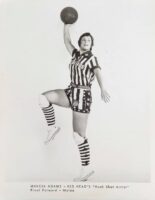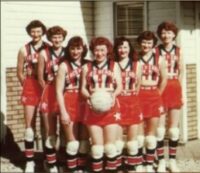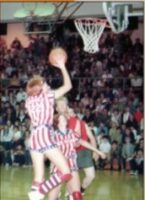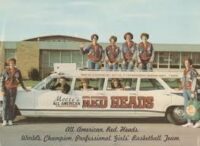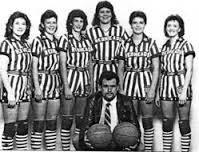Inductees
All American Red Heads
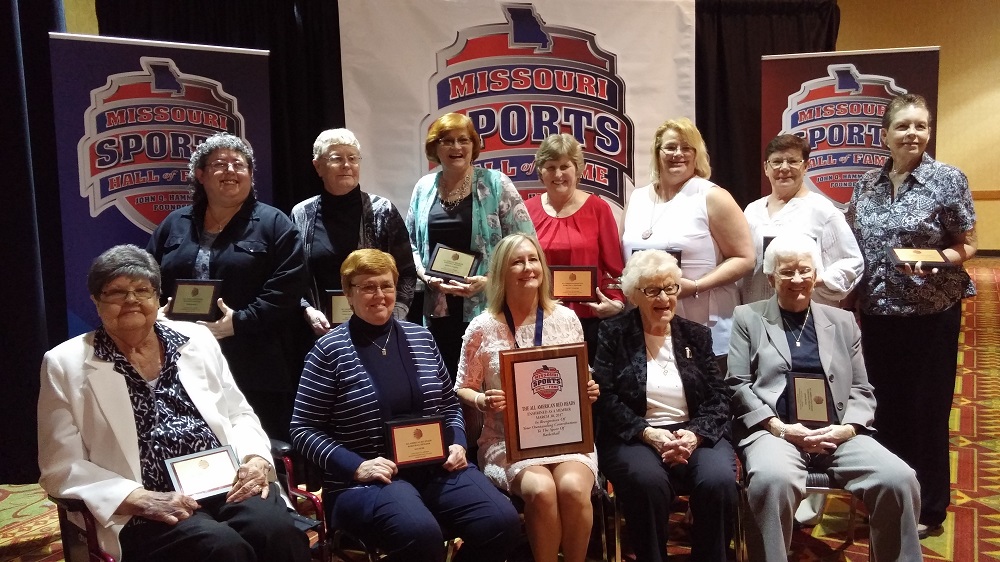
Decades before a push to add women’s sports in colleges and high schools – and long before Title IX would pave the way for so many – an idea born in the southwest Missouri community of Cassville actually may have set the eventual stage.
There, in 1936, businessman C.M. “Ole” Olson started a barnstorming women’s basketball team called the All American Red Heads. Little did anyone realize that the organization would last a whopping 50 years through 1986.
As Cairo native and early 1970s Red Head Brenda Koester put it, “They always called us the pioneers of women’s basketball.”
Now, the All American Red Heads Basketball Program – the longest-running, professional women’s franchise the sport’s history – has another milestone. The Missouri Sports Hall of Fame is proud to induct the program with the Class of 2017.
Playing in dyed red hair and red, white and blue uniforms, the Red Heads barnstormed the country, with seven-person teams traveling in makeshift station wagons or limos. And their success continued after Orwell Moore purchased the organization in the late 1940s, as the Red Heads played to packed houses across the country and into Canada during seven-month seasons — 220 games every year.
In fact, the Red Heads soldiered on despite playing men’s teams by men’s rules, shattering stereotypes in the process, and overcame social barriers. They’d play almost two quarters and then put on entertaining shows much like those of the Harlem Globetrotters, with fancy dribbling, rocket-like passes and trick shots. Eventually, the team was inducted into the Naismith Basketball Hall of Fame.
Thus, the Red Heads made dreams come true. For the O’Bryan sisters of Cairo – now Brenda Koester and Kay Burk. For Edina’s Pat Overman. And for many more young women.
Put it this way, it wasn’t until 1973 that Missouri high schools had a state tournament for girls basketball. That was one year after passage of Title IX, the federal legislation that boosted women’s sports in high schools and colleges across the country.
“(Dad) knew Title IX might affect the Red Heads because it allowed more girls an opportunity to play ball,” said Tammy Harrison, Moore’s daughter. “But if it was not for the team starting in 1936, opportunities for girls might have come along 20 years later. That’s just my opinion. They really paved the way.”
Koester learned of the team while playing softball in Louisiana and made the cut for the Red Heads roster following a camp in Mississippi in 1970. Eventually, her teams toured Alaska for a month, playing 44 games in 30 days.
“I played all four years of high school. There was no state or anything,” Koester said.
Her sister, Kay, joined the team in 1973 – when the Red Heads had three traveling teams in the early part of the 1970s.
“We played all over the United States,” Burk said. “My last year, we played an afternoon game in Belcourt, North Dakota and then traveled to Napoleon, North Dakota for a night game and then made an all-night-and-day trip to Dexter, Kansas for the next night’s game. You’d get there in time to change into your uniform and get on the floor.”
Players earned $150 a month in the early 1970s and increased to $250 by the late 1970s. It was enough to help a number of players not need to find offseason work, allowing them to work on their skills.
During games, the men were required to play man-to-man, allowing the Red Heads to run their plays – and trick plays, too.
Among the skits was the dipsy-doodle, in which a player would dribble toward the basket, between her legs, lean forward and shoot over her own back. The Red Heads also performed knee shots and dribbling routines (Burk’s favorite), and Thomas enjoyed the piggyback — hopping on a teammate’s back and dunking the ball.
“At the time, I didn’t realize what an impact it would have later on,” Thomas said. “We didn’t know things would improve after Title IX. When we played in high school, we’d just play after school. Now they have a better stage.”
The red hair – from Clairol 33 – was part of the team’s signature look, too, and “I called it Bozo red,” said Lynn Thomas, who played from 1971 to 1973. “If you didn’t rinse it out and then played and sweated, that red dye would run down your face.”
Overall, what a great American story. An All American Red Heads story, that is.
Said Koester, “We showed that women could play ball.”

